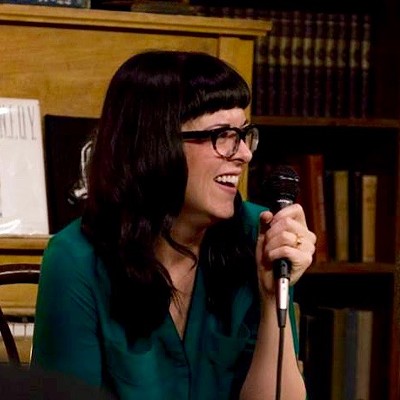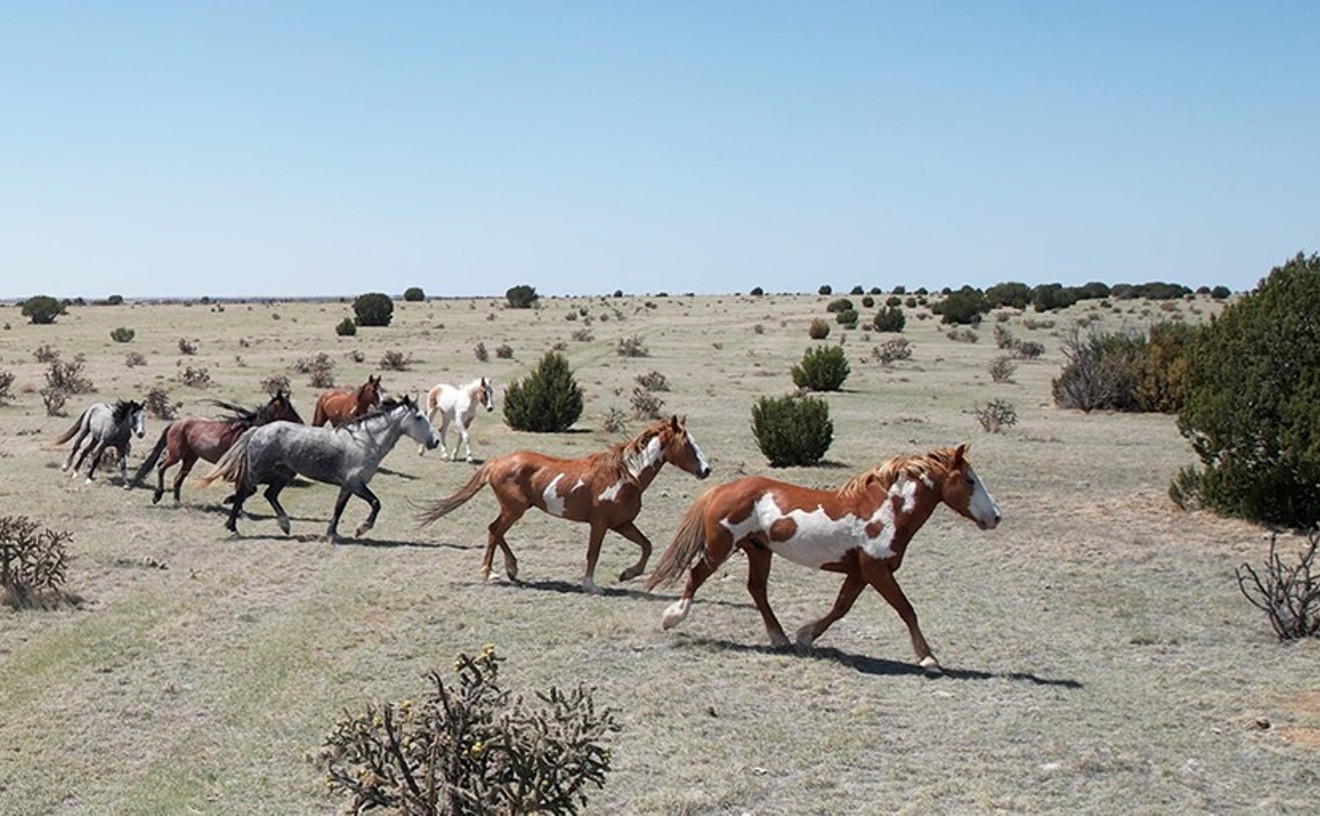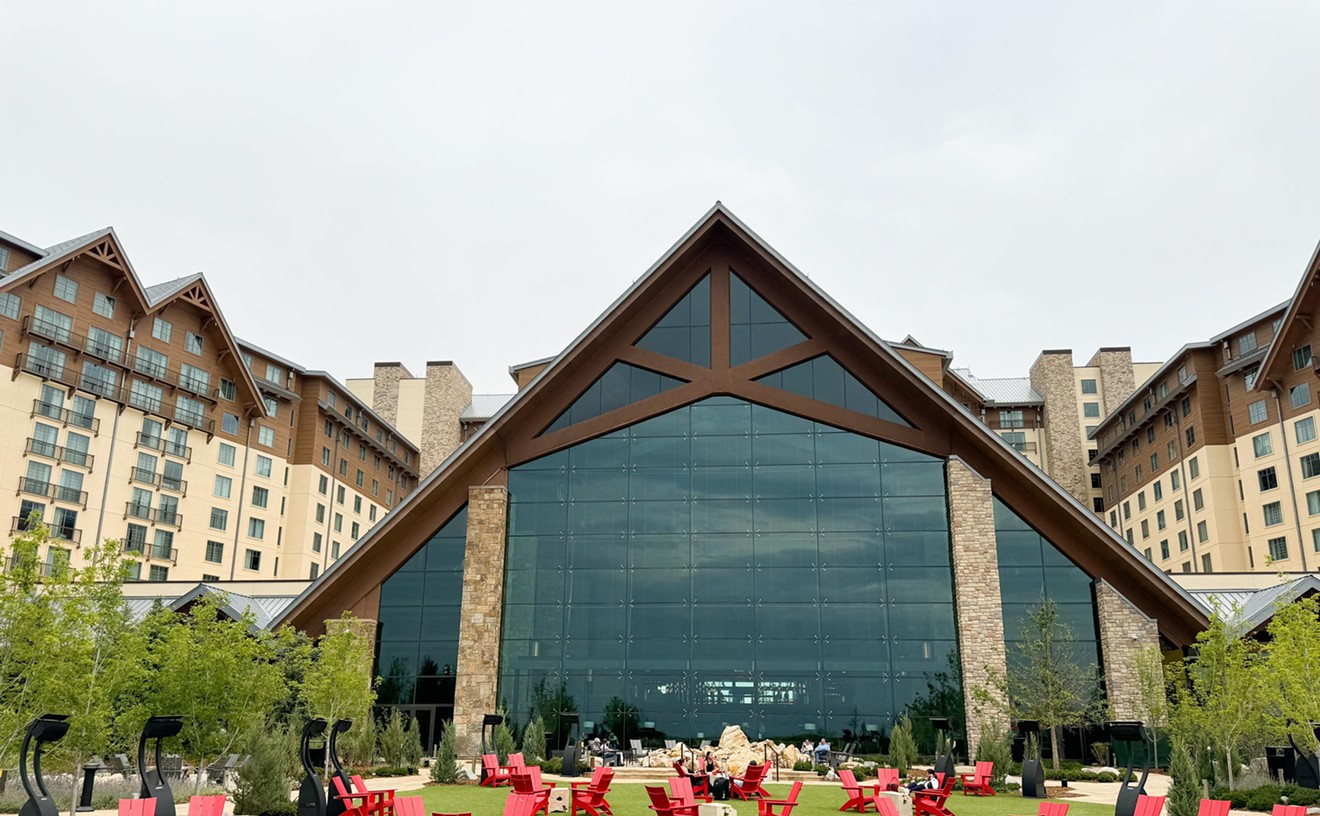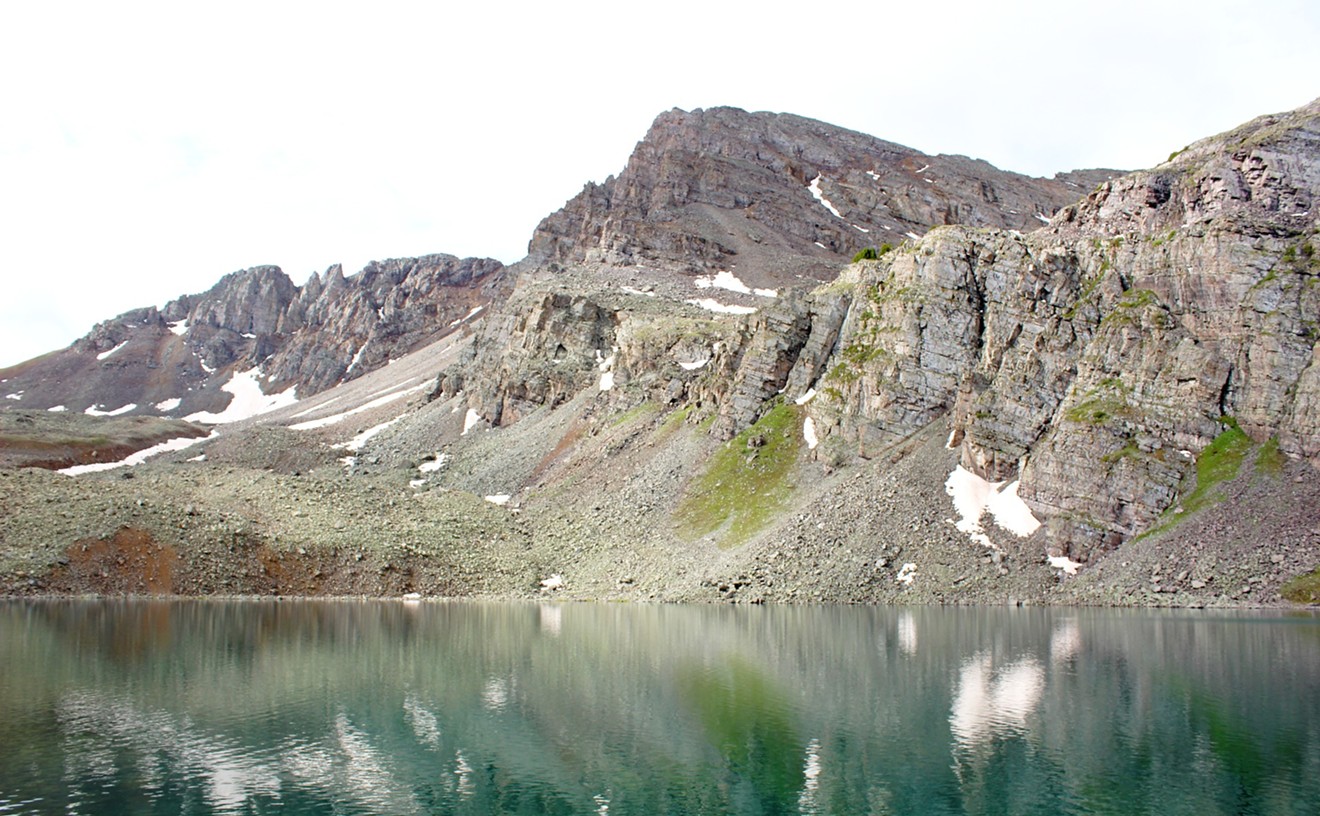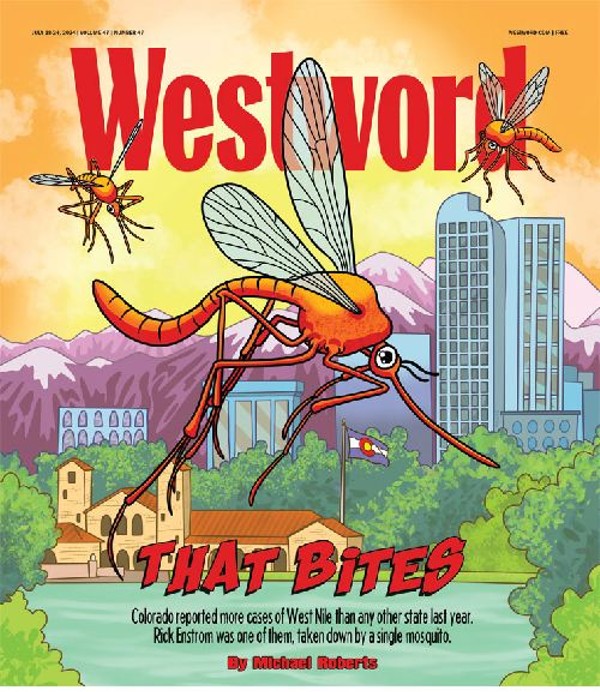When I walked into the Wagon Wheel Skate Center in Brighton last weekend for a music-video shoot, I expected to be hit with an intense wave of nostalgia. Growing up half-time in Brighton, I spent many a Friday night at the skating rink, eating microwaved pretzels and wishing I wasn't so afraid to talk to boys (actually, I was just deathly afraid of boys altogether.) But I didn't immediately feel anything remotely resembling nostalgia for the old, good times in that the place — maybe it looked different than when I frequented the old barn off of Brighton Road and 144th Avenue in the '90s? Probably not. Whatever it was, I just didn't recognize it.
Still, it was pleasant to be there. The Wagon Wheel seems to have captured the perfect balance of kitsch and sentimentality: slightly outdated but clean, warm and inviting, the skating rink's very '90s carpet patterned with rollerblades and skates in neon colors went well with the old school flashing police lights mounted on wagon wheels hanging from the ceiling above the skate floor. The snack bar was set back in a lunch room-sized area, complete with a wood shingle overhang and pastel neon lighting. Thinking about all of the various skating rinks I used to frequent as a child, I'm pretty sure they seemed outdated back then, too. It's like these places can't actually exist in the present. That's kind of the magic of a skating rink in the first place — its a terminally nostalgic presence.
Standing outside of the Wagon Wheel, I was amazed by the structure itself. In the fast-casual, pre-fab world that Denver has begun to occupy, here was this old barn with an arrow-shaped grouping of lights on the top, a simple marquee and a few wooden cut-outs of cartoonish roller skates fashioned to the sides. Its location is in the middle of dirt lot surrounded by land and a few farm houses. The structure looked as though it had been altered throughout the years by human hands, not shit out of a 3D printed future machine. Stepping out of Denver for a moment and into a world I used to know gave me a little perspective on the city's current disconcerting growth situation — one that seems to permeate conversations I have weekly. Yes, I still am concerned for Denver's aesthetic (not to mention potentially totally unaffordable) future — but I can also see where new design might fit into the bigger picture. After all, in the same way that not everything that is old is inherently cool, not everything brand new is ugly.
Back home in Barnum, I was startled to learn that a long-vacant lot across the alley from our house was going to be the site of my beautiful neighborhood's first new-build in a while. I don't know what it's going to look like; I don't know how big it's going to be; I don't know how its existence is going to affect those of us that live around it. My first reaction was to be upset — but then I realized that this was inevitable. With real estate prices skyrocketing in Denver, Barnum wasn't going to be immune to the constant construction the rest of the city is experiencing for long.
One lot over from the just-assembled foundation for the new-build are the skeletal remains of a large teepee. On the other side is a small home with a pile of broken office chairs stacked against it. To the back of the land sits our highly trafficked alley, littered with cases of Corona bottles and water-logged mounds of garbage. Would I be nostalgic for this scene if the neighborhood went to beefy new-build hell in the next year? In some ways, yes. But not totally. The trip to Brighton gave me a wake-up call: Denver's future has to be a little bit of everything. This conversation isn't about Denver home-towners versus the transplants, because I know plenty of Colorado newbies interested in preserving the Denver that brought them here in the first place, just as I know a few locals who would love to see every structure more than twenty years old torn down and replaced.
I keep going back and forth in my mind and in my heart, trying to figure out how to reconcile the unstoppable railroad of progress while keeping an eye on what makes Denver great. There has to be room for all of it; we can't be like the outskirts of Brighton, holding tight to a family-owned and operated skating rink in a barn that looks like a fusion of all the decades of roller skating's past.
On the other side of the coin, Denver can't be the unaffordable, IKEA-fed, temporary luxury look of the immediate future, either. Where's the negotiating point? How do we, as a city, cultivate a future self that looks like Denver in all forms?
Be my voyeur (or better yet, let me stalk you) on Twitter: @cocodavies
[
{
"name": "Air - MediumRectangle - Inline Content - Mobile Display Size",
"component": "12017618",
"insertPoint": "2",
"requiredCountToDisplay": "2",
"watchElement": ".fdn-content-body",
"astAdList": [
{
"adType": "rectangle",
"displayTargets": "mobile"
}
]
},{
"name": "Editor Picks",
"component": "17242653",
"insertPoint": "4",
"requiredCountToDisplay": "1",
"watchElement": ".fdn-content-body",
"astAdList": [
{
"adType": "rectangle",
"displayTargets": "desktop|tablet"
},{
"adType": "rectangle",
"displayTargets": "desktop|tablet|mobile"
}
]
},{
"name": "Inline Links",
"component": "18838239",
"insertPoint": "8th",
"startingPoint": 8,
"requiredCountToDisplay": "7",
"maxInsertions": 25
},{
"name": "Air - MediumRectangle - Combo - Inline Content",
"component": "17261320",
"insertPoint": "8th",
"startingPoint": 8,
"requiredCountToDisplay": "7",
"maxInsertions": 25,
"watchElement": ".fdn-content-body",
"astAdList": [
{
"adType": "rectangle",
"displayTargets": "desktop|tablet"
},{
"adType": "rectangle",
"displayTargets": "desktop|tablet|mobile"
}
]
},{
"name": "Inline Links",
"component": "18838239",
"insertPoint": "8th",
"startingPoint": 12,
"requiredCountToDisplay": "11",
"maxInsertions": 25
},{
"name": "Air - Leaderboard Tower - Combo - Inline Content",
"component": "17261321",
"insertPoint": "8th",
"startingPoint": 12,
"requiredCountToDisplay": "11",
"maxInsertions": 25,
"watchElement": ".fdn-content-body",
"astAdList": [
{
"adType": "leaderboardInlineContent",
"displayTargets": "desktop|tablet"
},{
"adType": "tower",
"displayTargets": "mobile"
}
]
}
]


